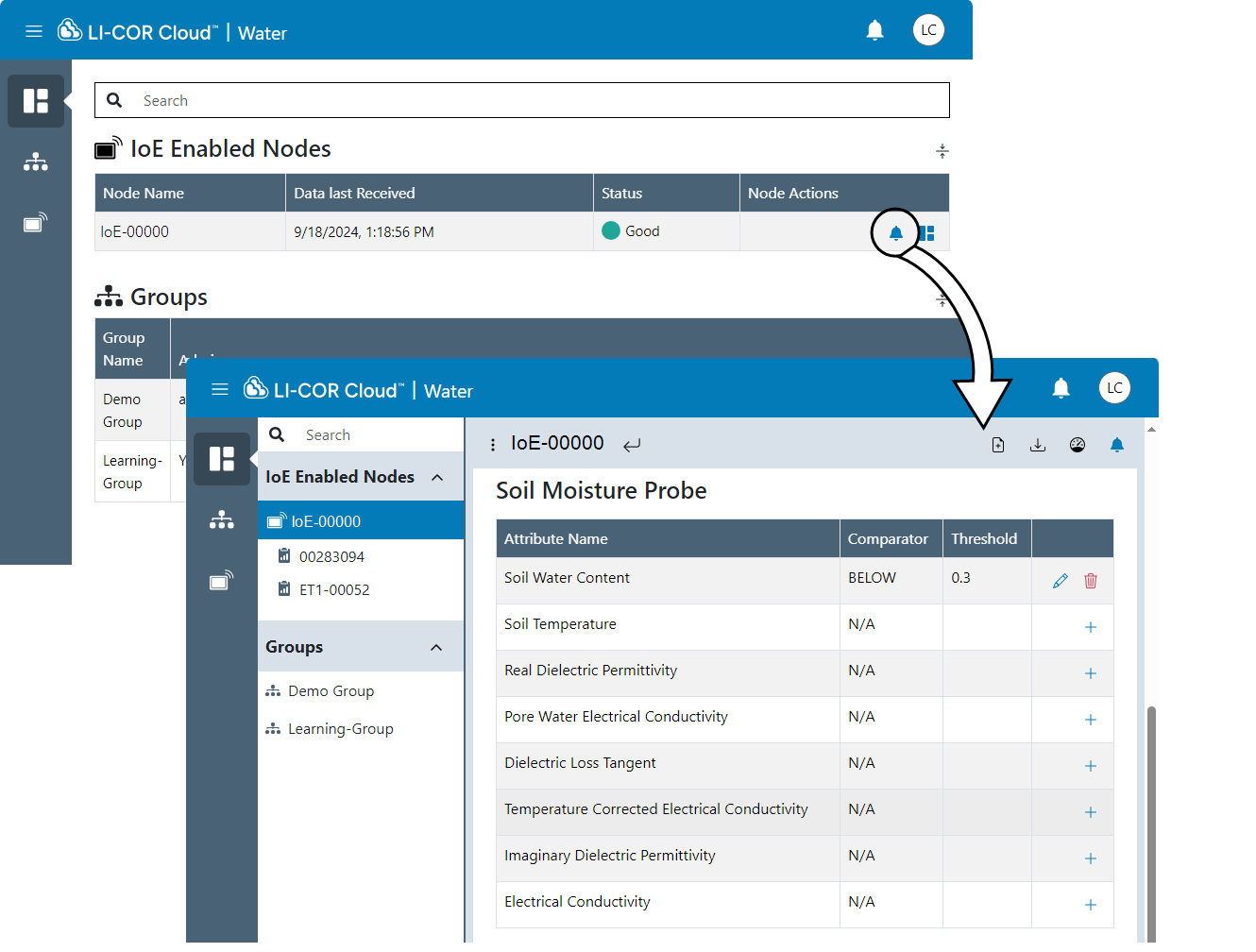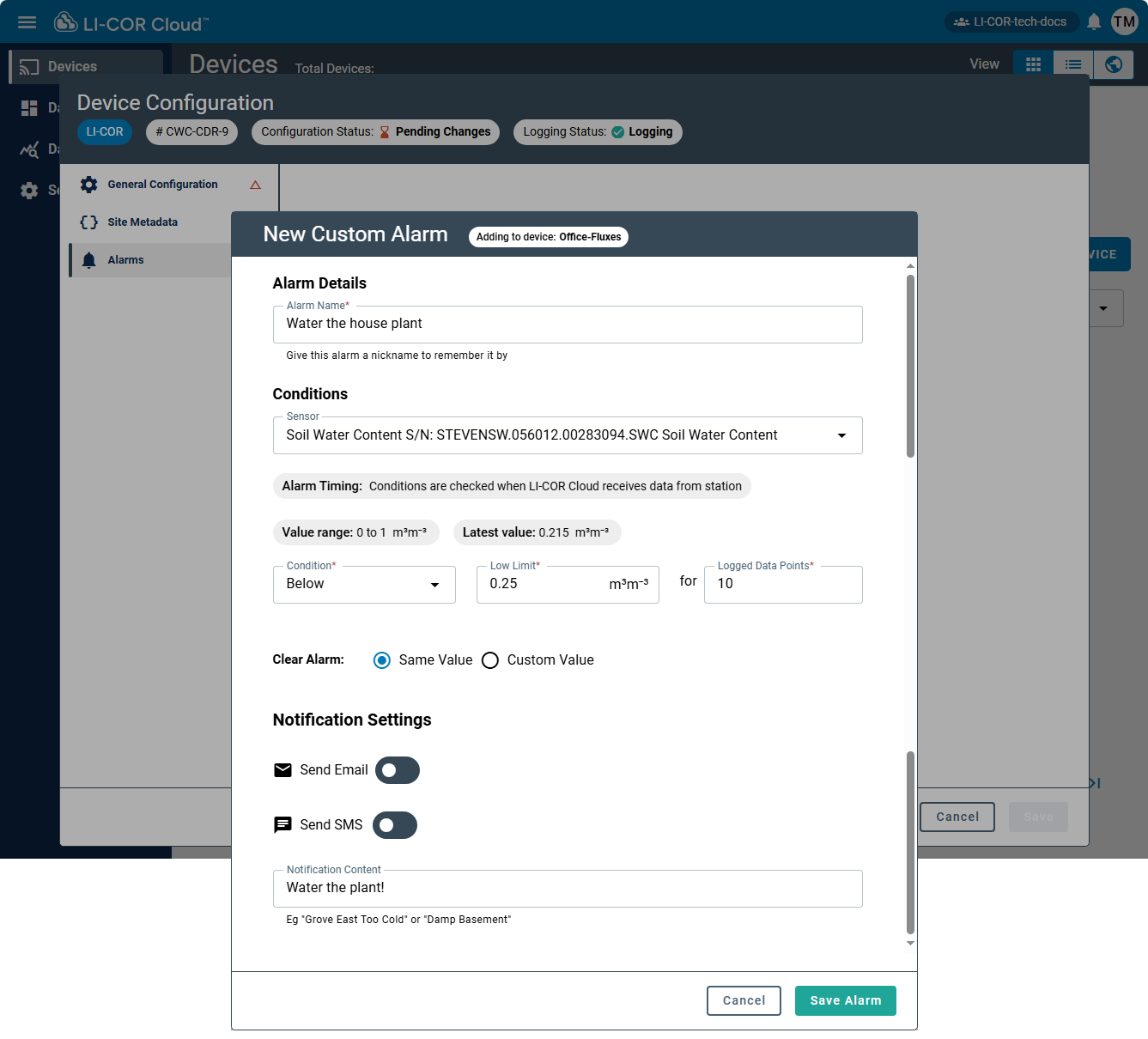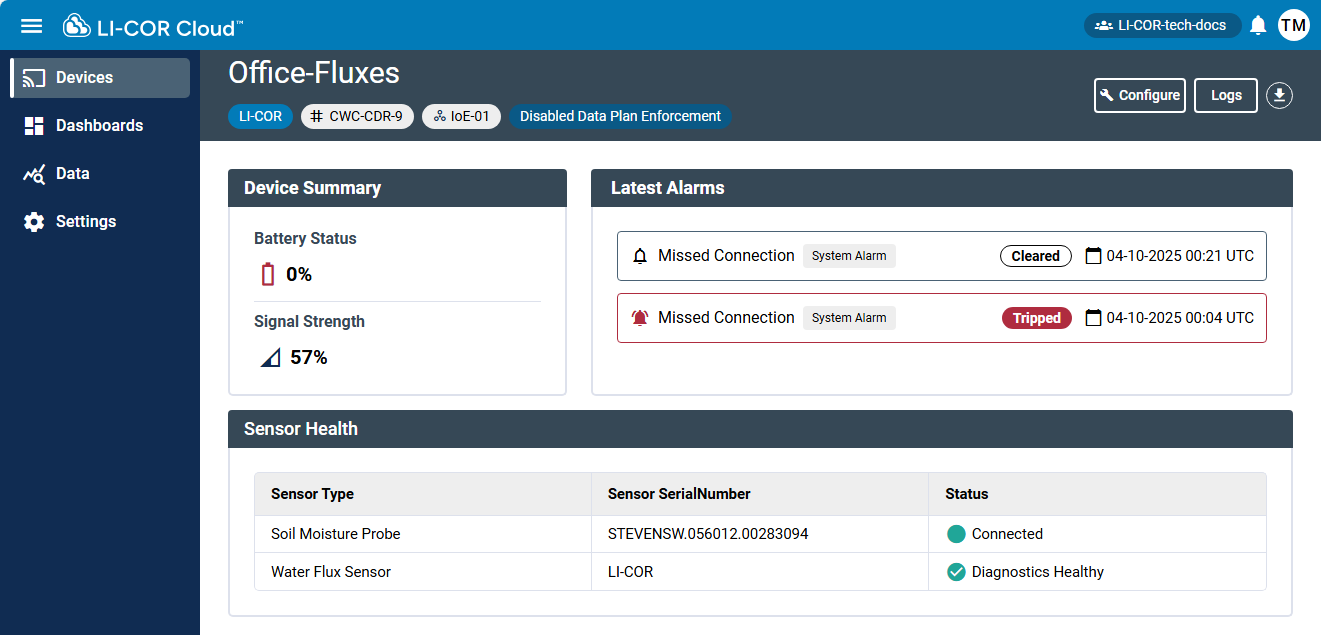Alarms and notifications
System alarms
System alarms are triggered by events, such as a missed device connection, low battery (station or sensor), or a sensor error.
| Field | Status | Description |
|---|---|---|
| System Alarms | Optional | Alarms appear in the LI-COR Cloud software and on your device. You can add Actions that are initiated when alarms are triggered. System alarms cover issues with the station or sensors including missed connections, low battery on a station or wireless sensors, and sensor failures. |
| Email Action | Optional | Select to use email to report alarm conditions. Enter one or more email addresses and select if you want an email when alarms clear. |
| SMS Action | Optional | Select to use SMS to report alarm conditions. Enter one or more phone numbers and select if you want a text message when alarms clear. |
Custom alarms
Custom alarms are configurable to be triggered if a measured value exceeds a threshold.
| Field | Status | Description |
|---|---|---|
| Alarm Nickname | Optional | Name the alarm something that will help you remember it. |
| Sensor | Required | Select the sensor you are creating this alarm for. |
| Value range | NA | Reports the range of possible values for this sensor. |
| Latest value | NA | Reports the latest logged value. |
| Condition | Required if you are setting an alarm. | Select above, below, or outside range. |
| Limits | Required if you are setting an alarm. | Specify the upper limit, lower limit, or both. |
| Logged Data Points | Required if you are setting an alarm. | Specify how many logged data points are outside the specified limit for the alarm to trip. |
| Actions | Optional | Select Email or SMS, as for other alarms. |
| Alert Content | Optional | Content of the alert when the alarm trips. |
Configuring alarms
To configure an alarm:
-
From Devices tab, select a station and click
 Configure >
Configure >  Alarms.
Alarms. -
Activate system alarms and create custom alarms.
You can configure the timing of System Alarms and choose how to receive the notification (email or SMS), as well as the content of the notification. You can also choose to be notified when the alarm is cleared.
-
Or you can configure the parameters for custom alarms.
-
To add a custom alarm, click + NEW ALARM and then configure the settings.
Some settings are required, including the name, condition, and limits.
- Conditions: Above, below, or outside range. For each option, you will also specify the threshold or range.
- Logged Data Points: The number of points out of range before the alarm is triggered.
Alarms for calculated measurements
See Creating calculated measurements for details about calculating new parameters from data. After creating the new parameter, you can create alarms for calculated measurements using the following fields.
| Field | Status | Description |
|---|---|---|
| Alarm Nickname | Required | Name the alarm something that will help you remember it. |
| Condition | Required | Select Above, Below, or Outside Range. |
| Limits | Required | Enter High, Low, or a Range of Limits, depending on what you selected in Condition. |
| Logged Data Points | Required | Specify how many logged data points are outside the specified limit for the alarm to trip. |
| Actions | Optional | Select Email or SMS, as for other alarms. |
| Alert Content | Optional | Content of the alert when the alarm trips. |
Viewing alarms
Select a Device to see alarms that have been tripped and cleared.
Notifications that have been configured (whether you subscribe or not) can be viewed by clicking the notifications button
![]()




